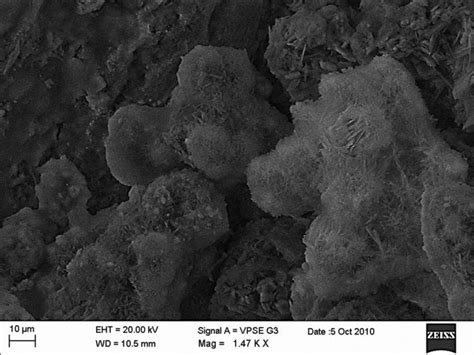What You Should Know Before Buying Hydroxyapatite Toothpaste
With the rise in alternative oral care solutions, nano-hydroxyapatite toothpaste has been gaining traction as a highly effective, fluoride-free (or complementary) option for dental remineralization. If you’re considering switching to or learning more about hydroxyapatite-based toothpaste, this guide will explain everything you need to know, from particle size, ideal concentrations, and clinical efficacy to its combination with fluoride.
What is Hydroxyapatite?
Nano-hydroxyapatite (nHAp) is a synthetic form of hydroxyapatite, a naturally occurring mineral that makes up 97% of tooth enamel and 70% of dentin. It was first introduced in oral care products in the 1980s as a biomimetic alternative to fluoride. Hydroxyapatite nanoparticles work by filling microscopic holes and defects in your enamel, essentially rebuilding and strengthening teeth.
Why Particle Size Matters
The effectiveness of nHAp toothpaste lies in the particle size:
Nano-hydroxyapatite particles are extremely small (typically <100 nanometers) or typically between 5 and 20 nanometers. They closely match the size of natural hydroxyapatite crystals in tooth enamel. This similarity enables nHA to effectively integrate and penetrate deep into the micropores and defects of enamel, promoting remineralization and strengthening of teeth.
Larger hydroxyapatite particles lack this depth of penetration and adhesion.
In simpler terms: the smaller the particle size, the better it adheres to enamel and mimics the natural tooth structure, leading to improved remineralization.
The following image illustrates the enamel surface treated with nanohydroxyapatite at high magnification:
Why 10% Concentration is Ideal
Clinical studies and research consistently show that 10% nHAp concentration in toothpaste strikes the perfect balance of:
Effectiveness: Strong enamel remineralization.
Safety: Non-toxic if swallowed, making it a great choice for children and those sensitive to fluoride.
Sensitivity Management: Seals exposed dentin tubules to reduce hypersensitivity.
The attached chart demonstrates this well: at 10% concentration, nano-hydroxyapatite performs comparably to fluoride in improving enamel microhardness. In this specific study, tests such as Cross-Sectional Microhardness (CSMH) and Polarized Light Microscopy (PLM) confirmed nHAp’s efficacy even in acidic, cyclical conditions.
This means that 10% nHAp can restore enamel integrity and protect against acid erosion as effectively as fluoride.
nHAp vs. Fluoride: A Comparison
Both fluoride and nano-hydroxyapatite have shown strong enamel remineralization properties, but here’s what sets nHAp apart:
The choice between fluoride and nHAp depends on your preference and needs, but many prefer hydroxyapatite toothpaste for its natural, biocompatible qualities.
Combination with Fluoride
What if you don’t want to choose between the two? Some toothpaste formulas, like that of Ollie combine nHAp and fluoride to create a dual-action approach. Together, they:
Enhance enamel remineralization.
Strengthen enamel structure.
Prevent cavities and repair early tooth decay.
This combination makes it an ideal solution for those looking for maximum protection.
Clinical Research Supporting nHAp
Numerous peer-reviewed studies have validated the effectiveness of nHAp toothpaste. A 2014 study published in the National Center for Biotechnology Information (NCBI) confirms:
nHAp significantly remineralizes enamel when compared to fluoride.
It offers superior sensitivity relief.
nHAp is effective under acidic conditions, mimicking real-world oral environments.
Furthermore, nHAp toothpaste demonstrates a safe profile, making it a viable fluoride alternative, particularly for children, pregnant women, or individuals concerned about fluoride toxicity.
Key Benefits of Nano-Hydroxyapatite Toothpaste
Here’s why nHAp toothpaste is a game-changer:
Remineralizes Enamel: Repairs micro-damage and strengthens teeth.
Safe for All Ages: Non-toxic, even if swallowed.
Reduces Sensitivity: Seals dentin and soothes tooth pain.
Fights Plaque: Adheres to and removes plaque during brushing.
Ideal for Fluoride-Free Users: Offers a natural and effective alternative.
Is Hydroxyapatite Toothpaste Right for You?
Hydroxyapatite toothpaste is ideal for:
Individuals sensitive to fluoride.
Children (safe if accidentally swallowed).
Pregnant or breastfeeding women.
Those suffering from tooth sensitivity.
People looking for a natural, fluoride-free solution for cavity prevention and enamel repair.
Nano-hydroxyapatite toothpaste is more than a trend, it’s backed by decades of research and clinical validation as an effective, safe, and natural solution for improving oral health. With a 10% concentration, small particle size, and the ability to work as well as fluoride, nHAp toothpaste has earned its place as a modern dental care essential.
Whether you’re seeking an alternative to fluoride or looking for the perfect solution for sensitive teeth, nHAp toothpaste might just be your smile’s new best friend.
If you’re ready to switch to hydroxyapatite toothpaste, look for trusted brands with 10% nano-hydroxyapatite, you can find some of my recommendations here and here, and don’t hesitate to check for combinations that incorporate fluoride for added benefits.
Link to Clinical studies:
















